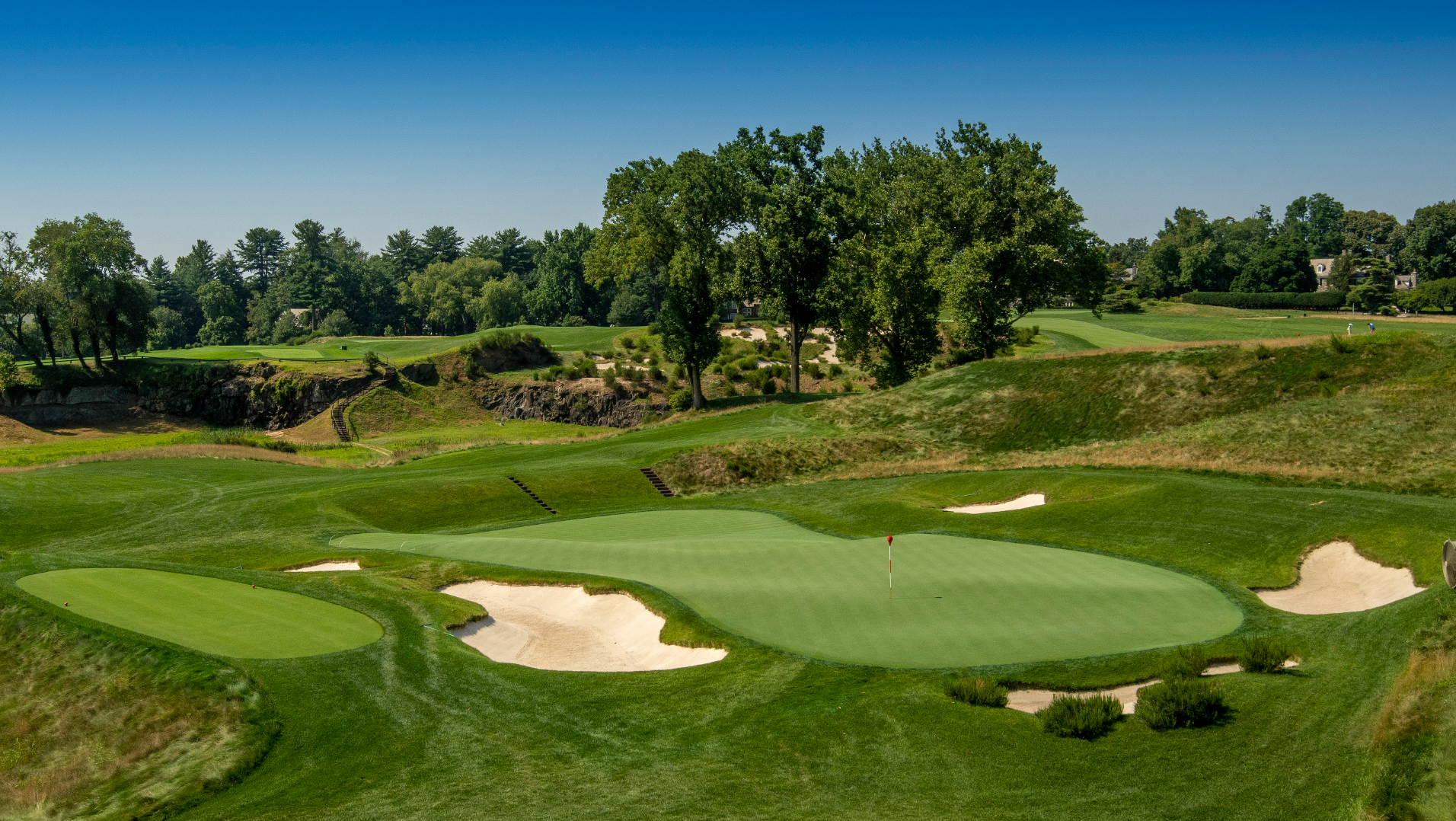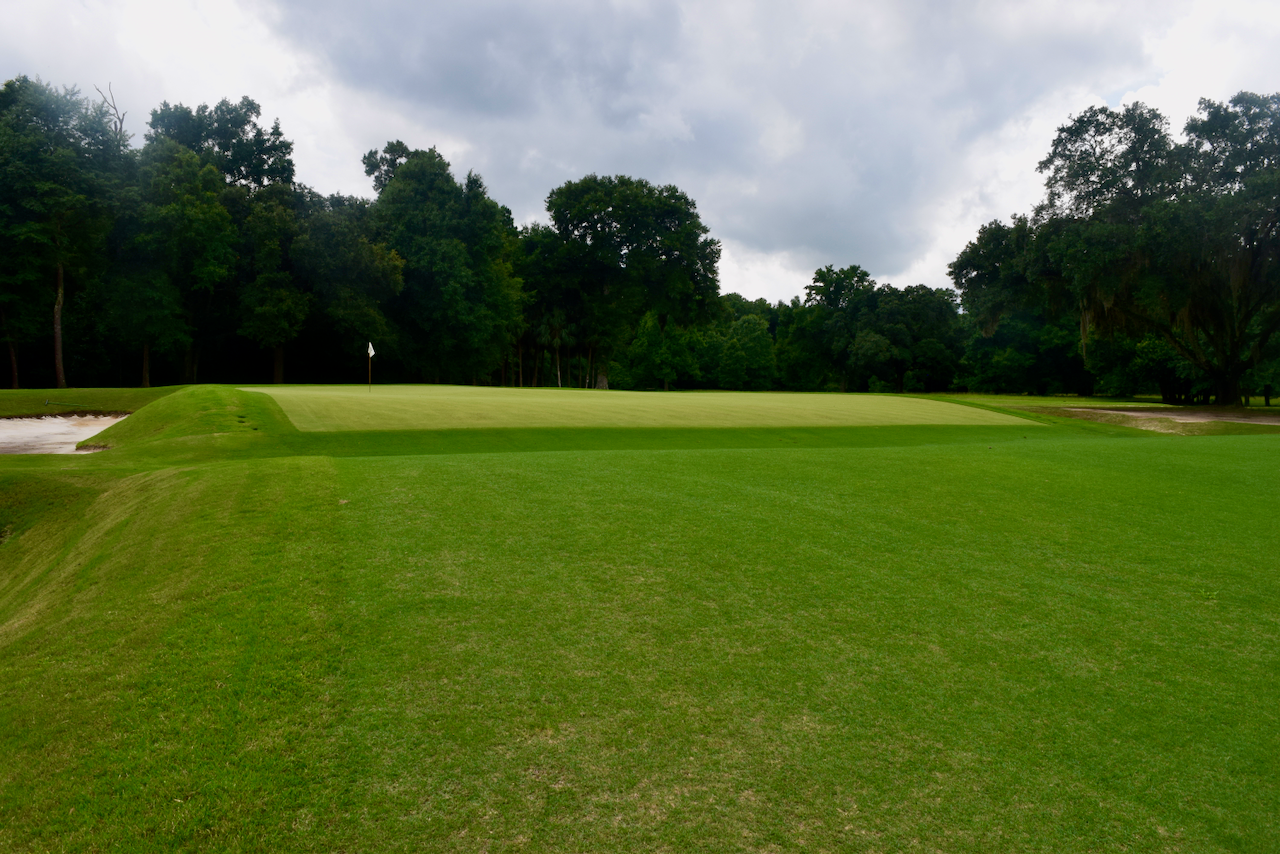The message of great, strategic golf course architecture is clear. The actual words used to describe those golf courses, however, are many. The Architecture Glossary column will examine more precise terms and concepts that one will find when exploring golf course architecture. Hopefully understanding these terms, and why certain architects employed them, will help you to better understand the golf courses you play…and maybe even improve your scores!
This month’s entry may seem like a cop out, as even the most casual of Open viewers is familiar with the infamous Valley of Sin that sits ahead of No. 18 at St. Andrews Links Old Course’s No. 18 green.
Few realize just how much of an architectural impact that single hazard has had in the wider world of golf course architecture, however. That influence will be much more in focus across this entry but first, for those unaware, we’ll take a quick look at the original Valley of Sin.

The original Valley of Sin stands evident at the fore of the final green at the Old Course (Photo Credit: Gary Lisbon).
Although a course has existed on the site for more than 500 years, the current rendition of the route is frequently credited to Old Tom Morris, who made a number of significant alterations to its holes. Although he had a hand in making famous quite a few of the Old Lady’s most infamous hazards, few are as authoritatively Old Tom’s as the Valley of Sin. Upon his arrival at the club, the final green sat some 30 yards ahead of its current placement, meaning the Valley was not in play. Morris made the obvious change, dragging the putting surface behind the swale’s maw, an eight-foot deep channel running along the front edge of the green. No sand, no water, but plenty of intimidation nonetheless. Front pins in particular result in short shots that roll backwards, creating an awkward chip upwards. The Valley assures that, even with modern technology, the 356-yard closer is no pushover for pros.
At the most literal conceptual level, any shortgrass valley tucked near the front of a green could be considered a “valley of sin” (if not “the Valley of Sin”).
The magnetism of the Valley’s bottom has invited many comparisons over the years, with some even wondering whether this hazard serves as the common ancestor for everything we now call a “false front.” This might be a bit of an exaggeration; although the Valley certainly merits the “false front” descriptor, there are many other linksland holes — including at St. Andrews — that will repel an approach that lacks proper oomph.
Still, it’s worth noting that several notorious false fronts were designed with the Valley in mind. For example, Hugh Wilson scouted the classic links to generate ideas for his design at Merion Golf Club’s East Course. The final par three, No. 17, features a significant false front between its lowest and middle tier, inspiration for which Wilson attributed to the Valley of Sin.

High Wilson visited Scotland to gather ideas for his courses at Merion Golf Club. He cited the Valley of Sin when implementing the sin-ister false front at the East Course's No. 17 par three. (Photo Credit: USGA)
Does this make No. 17 an example of a “valley of sin,” however? At the risk of sounding prickly, we’d suggest “no.” While the Valley may have inspired many a false front, a true valley of sin is not in itself part of the putting surface (for more puttable valleys, see last month’s post on bathtub greens).
There are, of course, direct descendants from the Valley lineage.
Few architects were as inspired by the Old Course than Alister MacKenzie, who wrote his treatise The Spirit of St. Andrews on Morris’s work at the course. The Valley of Sin was one of several hazards that the doctor incorporated into various designs around the world.
Perhaps the most prominent still in existence occurs at one of MacKenzie’s often ignored gems, the Red Course at Argentina’s Jockey Club.
No. 18 is unmistakable in its similarities to the closer at the Old Course. Aside from being the final hole, this par four plays to almost exactly the same distance (355 yards) as its inspiration, features no bunkers, and incorporates a large putting surface. Most notable is the valley that runs ahead of the green — those who misplay a running approach, or put too much spin when attacking a frontward pin, will find themselves in the pit.

Alister MacKenzie's closing hole at the Jockey Club's Red Course approaches replicating the Home hole at St Andrews in terms of yardage, lack of bunkers, and of course the daunting valley of sin ahead of the green. (Photo credit: The Jockey Club)
It seems that MacKenzie may have intended to make a template of the concept. No. 7 at Augusta National Golf Club would have been the showcase version. It too measured just 370 yards upon its founding, and featured no bunkers. Instead, a valley of sin ran across both the front tongue and the fairway inset of the L-shaped putting surface. Bobby Jones was unimpressed, and within five years he had ordered it rebuilt to mimic a different hole…No. 8 at Pine Valley Golf Club.
Speaking of templates, it’s somewhat surprising that the godfather of template golf holes, C.B. Macdonald, didn’t move to incorporate the final hurdle at St. Andrews into his canon. After all, his “Road,” “Eden” and “Long” templates — as well as the “Principal’s Nose” bunker featured in the “Double Plateau” template — are all nods to St. Andrews.
Perhaps, however, Macdonald did indeed have the Valley of Sin in mind when creating one of his more famous templates. Specifically, the Biarritz. This par three features an elongated green with a trench running through the middle. This, its most notable feature, was not actually present on the “Chasm” hole at Biarritz Le Phare. If it wasn’t present at the original, where did Macdonald get the idea? George Bahto, author of The Evangelist of Golf, was a proponent of the theory that Macdonald’s inspiration came from the Valley of Sin.

Some have suggested that C.B. Macdonald took inspiration from the Biarritz's signature swale from the valley of sin (Photo Credit: Ryan Book)
Although many clubs currently maintain the area both ahead of and behind the swale as putting surface, most of Macdonald and Seth Raynor’s original renditions of the hole designated the area ahead of the swale as fairway. This would live up to the snobbish standard we set above — that a valley of sin is not part of the putting surface, but a shortgrass ditch running ahead of the green.
One thing is almost certainly true of valleys of sin, however: They all sit at the front of the green. There is always value in leaving the ball below the hole…but perhaps not as much value as leaving a ball above the valley of sin. Approach accordingly.
